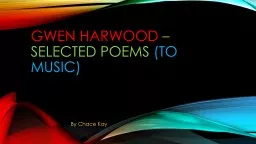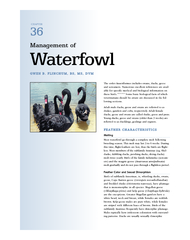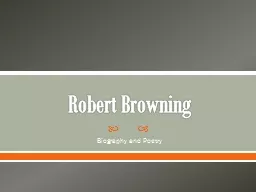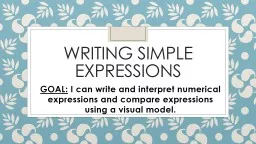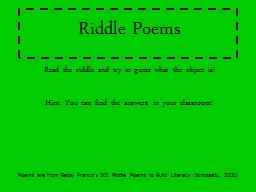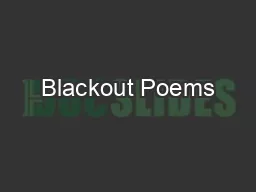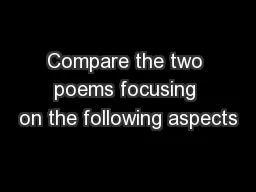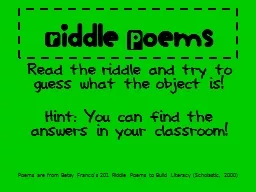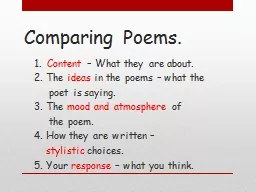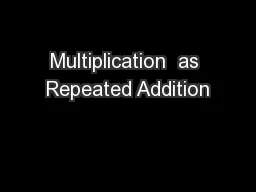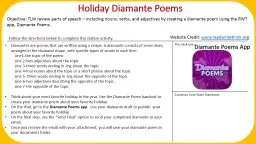PPT-Gwen Harwood – Selected Poems
Author : marina-yarberry | Published Date : 2019-02-20
To Music By Chace Kay amp Tyson Burton Poem You of the Minute Waltz and the Four Seasons you of the earthern flute and grand piano you with your immortal numbers
Presentation Embed Code
Download Presentation
Download Presentation The PPT/PDF document "Gwen Harwood – Selected Poems" is the property of its rightful owner. Permission is granted to download and print the materials on this website for personal, non-commercial use only, and to display it on your personal computer provided you do not modify the materials and that you retain all copyright notices contained in the materials. By downloading content from our website, you accept the terms of this agreement.
Gwen Harwood – Selected Poems: Transcript
Download Rules Of Document
"Gwen Harwood – Selected Poems"The content belongs to its owner. You may download and print it for personal use, without modification, and keep all copyright notices. By downloading, you agree to these terms.
Related Documents

